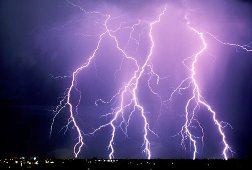 Hurricane Ike Survivors: Find Family & Friends
Hurricane Ike Survivors: Find Family & Friends
By: Joanne | September 16, 2008 | Category: Home and Family
Did you evacuate to get out of the path of Hurricane Ike? Do you need to find friends or family who were displaced by Ike? If you answered yes to either of these questions, read on.
There are websites you can register with to help you connect with your loved ones to let them know that you’re safe and well after the storm. I’m going to give you links to a few registries – if you were displaced by the storm or if you’re looking for someone, I suggest you visit them all.
- FEMA, the Federal Emergency Management Agency, operates the National Emergency Family Registry and Locator System.
- The Red Cross operates the Safe and Well List. The Safe and Well List even lets you to post a message (from a list of standard messages) so you can give your loved ones a little more information. For those without internet access, call 1-800-REDCROSS (1-800-733-2767) to register.
- Next of Kin National Registry is a free tool for daily emergencies and national disasters. The system gives emergency response agencies the information they need to contact your loved ones if you’re ever missing, hurt badly or worse.
- If you’re a tourist or other foreign national affected by a disaster in the U.S., contact your consulate.
And do remember that there are many ways that you can help the people impacted by Hurricane Ike by volunteering or donating. There are volunteer opportunities for kids, seniors, teens and groups and many reputable organizations you can support through donations to bring relief to hurricane survivors.
No matter what charity you chose to support, always be on the watch for identity theft and other scams and fraud schemes that try to take advantage of your good will and desire to help those in need.
![]()
Permalink
| View Comments [4]
| ![]() E-mail This Entry
| Tags:
disaster
flood
hurricane
ike
joanne
locator
shelter
storm
survivor
E-mail This Entry
| Tags:
disaster
flood
hurricane
ike
joanne
locator
shelter
storm
survivor

 Lightning has been called
Lightning has been called 